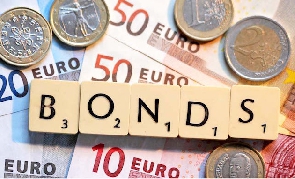 Ghana's eurobonds extended losses on Tuesday as investors took profits
Ghana's eurobonds extended losses on Tuesday as investors took profits
Ghana’s eurobonds extended losses on Tuesday as investors took profits ahead of a planned debt exchange to complete the West African nation’s lengthy restructuring of its borrowings.
Dollar bonds maturing in 2032 fell a seventh day by 0.1 cent to 50.93 cents on the dollar by 2:11 p.m. in London. Notes due 2034 suffered a similar losing streak by 0.1 cent to 50.88 cents on the dollar, the lowest in more than a month.
Ghana aims to start a debt exchange program this month and finish that process by September to round up its revamp of $13 billion of eurobonds. This follows last week’s agreement-in-principle reached with investors to reorganize the notes.
“There is limited price upside for bondholders under the restructuring proposal, which may explain recent profit-taking,” said Samir Gadio, head of Africa Strategy at Standard Chartered Bank. “Given that the Ghana Eurobond complex is large, there are probably enough holders who decided to exit positions and realize gains they would have made by entering bonds at lower levels in the past.”
US treasury yields have bounced since late June, and this has implications for the exit yield used to compute recovery for Ghana’s restructuring, Gadio said.
The rate on US 10-year notes rose 6.5 basis points on Monday to 4.46% before easing 3.5 basis points on Tuesday, according to data compiled Bloomberg.
There are two options for investors in the pact concluded last week. The so-called disco option imposes a 37% haircut on bondholders with 5% interest on new bonds from 2024 through July 2028 and 6% interest thereafter until 2035. The par option provides 1.5% interest on new bonds without a haircut.
The deal with bondholders still needs the endorsement of the official creditor committee representing the nation’s bilateral lenders, because of the comparability of treatment principle of the Group of 20’s Common Framework.
The framework, which Ghana and others like Ethiopia and Zambia deployed for their debt revamp, ensures that payment losses in the process of restructuring are reasonably shared between bond investors and bilateral lenders.